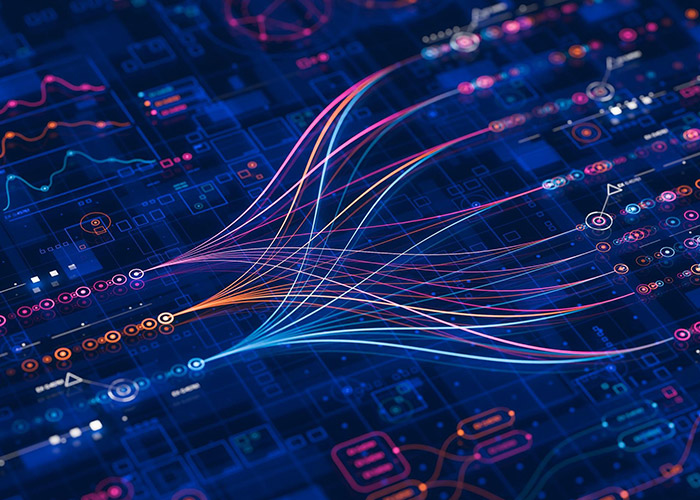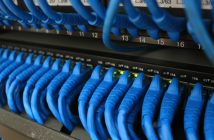
Cisco has unveiled a new network architecture to power the campus, branch, and industrial networks of the future. The new architecture delivers operational simplicity through unified management, next-generation networking devices purpose-built for AI workloads, and advanced security capabilities embedded into the network.
According to the Cisco IT Networking Leader Survey, 97% of businesses believe they need to upgrade their networks to make AI and IoT initiatives successful, and the stakes are high: a single severe outage can inflict nearly USD160 billion in losses globally. Faced with these challenges, IT teams need a new approach to scale operations, reduce downtime, and unlock new levels of efficiency and innovation.
“As AI transforms work, it fuels explosive traffic growth across campus, branch, and industrial networks, overwhelming IT teams with complexity and novel security risks at a time when downtime has never been more costly,” said Cisco President and Chief Product Officer Jeetu Patel. “With a new architecture, breakthrough devices optimised for AI, and AgenticOps, we’re leapfrogging the industry and reimagining how networks are managed and secured.”
Operational complexity is among the greatest challenges facing IT teams today. Cisco’s unified management platform addresses this by bringing together management of Meraki and Catalyst devices, along with support for next-gen wireless, switching, routing, and industrial networks—all in a single platform that supports any cloud, on-prem, or hybrid deployment.
Cisco’s unified management platform is further differentiated by ThousandEyes assurance, which now extends to mobile endpoints, and industrial IoT and delivers deeper, more actionable visibility into enterprise networks and Microsoft Azure. A new ThousandEyes and Splunk integration adds real-time insights from network to application. This multi-layered approach delivers comprehensive assurance and observability across both owned and unowned infrastructure, helping ensure consistent performance and operational resilience.
Supercharging the platform is AgenticOps, Cisco’s AI-driven approach to running modern IT operations that turns real-time telemetry, automation, and deep domain expertise into intelligent, end-to-end actions at machine speed and with IT teams still in control. Cisco’s AgenticOps capabilities are powered by a new Deep Network Model, a domain-specific LLM trained on decades of Cisco expertise, from CCIE-level content to Cisco U. courseware.
The Deep Network Model also powers the Cisco AI Assistant, a natural language interface that identifies issues, diagnoses root causes, and automates workflows. The result is AI that understands networks and works the way IT does, reducing task time from hours to minutes. Also, Cisco is introducing the all-new AI Canvas, a new AgenticOps capability, a generative AI user interface for customer dashboards that enables NetOps, SecOps, and DevOps teams to collaborate, optimise operations, and reduce IT strain.
To meet the unprecedented demands AI workloads will place on networks, Cisco is unveiling purpose-built hardware that delivers low latency, high capacity, and robust security for the AI-powered enterprise. Each device is tailored to meet the specific demands of its environment:
-
New Cisco C9350 and C9610 smart switches to power campus networks: Cisco is launching a new generation of Cisco Smart Switches, powered by Silicon One, that delivers up to 51.2Tbps of throughput, below 5 microsecond latency and quantum-resistant secure networking to power high-stakes AI applications.
-
New Cisco 8100, 8200, 8300, 8400 and 8500 secure routers: As AI transforms branch operations and customer interactions, new Cisco Secure Routers offer native SD-WAN and Secure Access Service Edge (SASE) integration, next-generation firewall (NGFW), and postquantum security into a single-box WAN solution—with up to three times the throughput of previous generations.
-
Expanded wireless portfolio: Cisco is extending its Wi-Fi 7 portfolio with the Cisco Wireless 9179F Series Access Points for stadiums and large venues and is delivering seamless, cloud-managed roaming for large campuses with the new Cisco Campus Gateway.
-
Expanded industrial portfolio: To meet the rigorous performance and reliability demands of industrial AI use cases, Cisco is introducing new ruggedised switches in a variety of form factors to support applications, including visual quality inspections and autonomous mobile robots. Additionally, new critical wireless use cases are now connected, with the integration of Ultra-Reliable Wireless Backhaul (URWB), together with Wi-Fi technology in a single access point.
Today’s enterprise networks face a complex and dynamic security landscape. To combat these continually evolving threats, Cisco is integrating advanced security into the network and is unveiling new protections across three critical layers:
-
Securing network infrastructure: New Cisco Live Protect provides kernel-level compensating controls, block exploits and defend campus switches and routers without requiring reimaging or downtime.
-
Defending data in transit: To safeguard data in transit, Cisco has added post-quantum-ready MACsec, WAN MACsec, and IPsec encryption to defend against “harvest-now, decrypt-later” attacks. In addition, the new Cisco C9000 Smart Switches are Hypershield ready. This will help enhance network segmentation to contain threats at machine speed.
-
Protecting users, endpoints, and applications: Starting from a strong foundation of micro-segmentation, AI-powered device classification, and common policy, Cisco is extending protections for every device and application connected across the network. With intelligence from Cisco Identity Services Engine, Cyber Vision, and Cisco Talos combined with Cisco Secure Access SSE, organisations can enforce security effectively at every point in the network.
The unified management platform is available now, Cisco AI Assistant is in public beta, and Cisco AI Canvas will be tested with select customers this spring.





